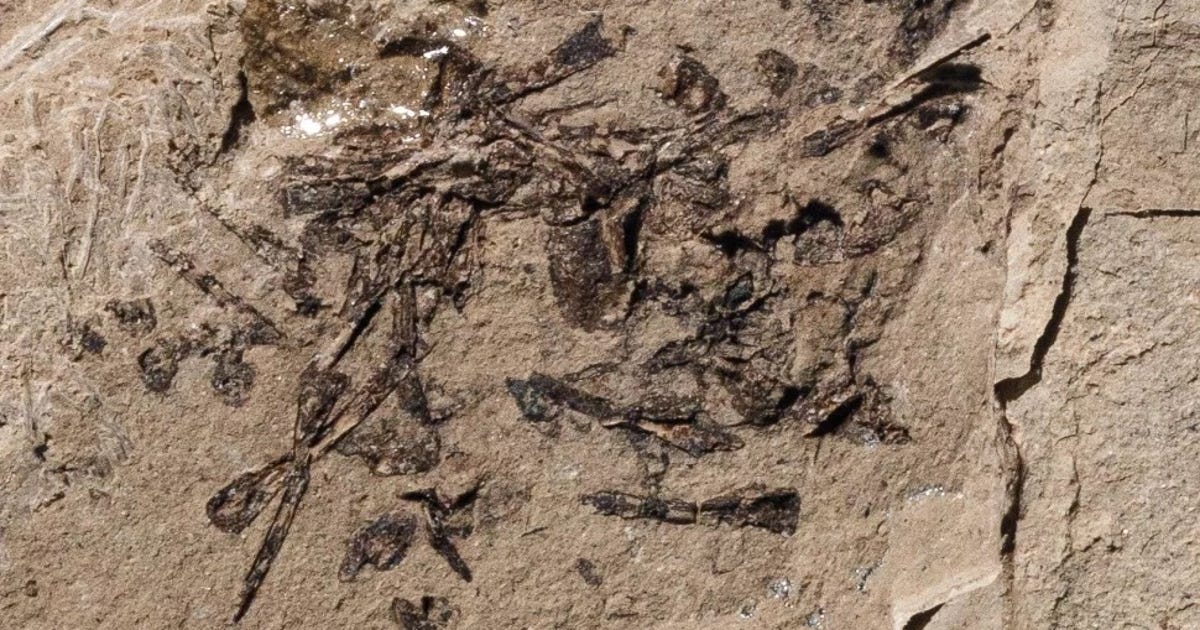Around 150 million years ago in what’s now Utah, an animal chugged down a small frog and a salamander. It then lost its lunch. Fast forward to modern times, when a team of paleontologists identified and investigated the fossilized vomit, unraveling a mystery along the way.
The researchers published a study on the puke in the journal Palaios late last month. The scientists found frog bones, including some that likely came from a tadpole, and bits from a salamander. “Aspects of this new fossil, relating to the arrangement and concentration of the bones in the deposit, the mix of animals, and the chemistry of the bones and matrix, suggested that the pile of bones was regurgitated out by a predator,” Utah State Parks said in a statement on Tuesday.
This delightful illustration shows two fish, one in the act of hunting and the other puking up its prey.
Brian Engh
Whose puke was it? The vomit dates back to the Late Jurassic, a time when dinosaurs like the jumbo-size Brachiosaurus and armored Stegosaurus still roamed. Shoutout to ReBecca Hunt-Foster, a paleontologist at Dinosaur National Monument in Utah, for coining the phrase “Jurassic Barf.” However, the vomit didn’t come from a dino.
The fossil site, famous for plant remains, was a pond long ago, home to amphibians and fish. The researchers worked out that a bowfin fish most did the vomiting. It’s possible the ancient fish upchucked to distract a predator. Utah State Parks noted the paleontologists jokingly referred to the fossil find as the “fish-puked tadpole.”
Despite having happened many millions of years ago, the vomit represents a familiar scene.
“There were three animals that we still have around today, interacting in ways also known today among those animals — prey eaten by predators and predators perhaps chased by other predators,” said study co-author John Foster, curator of the Utah Field House of Natural History State Park Museum. “That itself shows how similar some ancient ecosystems were to places on Earth today.”
The researchers hope to find other, similar fossils within Utah’s Morrison Formation, a layer of history that also preserves many dinosaur remains. Puke might not seem like the most glamorous paleontology subject, but it’s a fascinating (and slightly gross) window into life long ago.












/cdn.vox-cdn.com/uploads/chorus_asset/file/24774108/STK156_Instagram_threads_3.jpg)







Discussion about this post